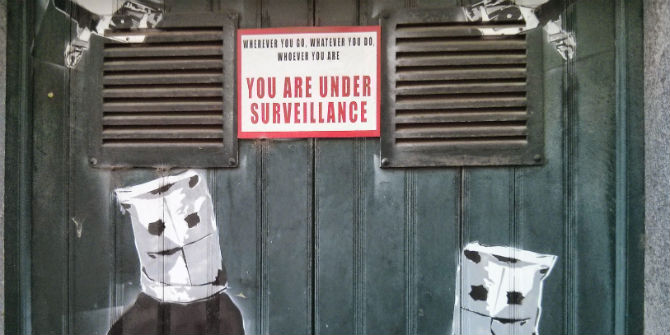 The Law Commission recently published its first report on contempt of court dealing with emerging issues with the use of internet during judicial proceedings. LSE MSc student and lawyer Anri Van Der Spuy analyses the recommendations and finds them a good start.
The Law Commission recently published its first report on contempt of court dealing with emerging issues with the use of internet during judicial proceedings. LSE MSc student and lawyer Anri Van Der Spuy analyses the recommendations and finds them a good start.
In 2012 Theodora Dallas was found guilty of contempt of court for conducting online research while she was a juror in a trial at the Luton Crown Court. Sentenced to six months in prison, Dallas has taken her case to the European Court of Human Rights.
This case is one of a growing number of examples indicating the potentially prejudicial impact that online information may have on the administration of justice. In clear recognition of this risk, the Law Commission has made various recommendations in its first report on contempt of court, published on 9 December 2013.
Juror misconduct and improving ‘jury literacy’
The Law Commission has recommended the introduction of a new statutory offence of sworn jurors in a case deliberately searching for extraneous information related to the case. Aimed at encouraging what may be termed jury literacy as well as consistency and certainty for jurors, specific recommendations include better education in schools regarding jury duty, simplifying and improving information given to jurors, and adapting the wording of the juror oath.
The focus on improving education is a laudable one – and one that could be extended to encourage a more general awareness of the risks that social media and online platforms pose to not only the administration of justice but also to individual users in terms of contempt of court and other legal proceedings. As the likes of Sally Bercow and Peaches Geldof’s recent online interaction has shown, there is a dire need to improve people’s awareness of not only their rights in the online sphere, but also their responsibilities. The question, perhaps, is rather who should bear the duty of improving such literacy – and, particularly, what the role and duties of intermediaries (like Twitter) should be.
Is anyone who ‘publishes’, posts or tweets a publisher?
When a well-known Paralympic athlete was charged with the murder of his girlfriend earlier this year, the Twitter followers of one journalist who was covering the case increased by more than 600% in the week between her death and the accused’s first court appearance.[i] The potential impact that 140-character, tweet-by-tweet court reporting may have on the judiciary is partly the reason for a renewed interest in the application of contempt of court principles to modern media.
The Contempt of Court Act 1981 (the Act) provides that any publication that may create a ‘substantial risk that the course of justice in the proceedings in question will be seriously impeded or prejudiced’ may be charged with contempt of court. Otherwise known as the strict liability rule, the publisher’s intention in publishing material that may be contemptuous is irrelevant.
But what amounts to publication? While section 2(1) of the Act requires that communication be ‘addressed to the public at large or any section of’ it, the Law Commission has shied away from defining the required size of the audience of such communication, explaining: ‘There is a myriad of different forms of new media, a variety of privacy settings which can be applied to them, and differences in the number of users with access to the material even if privacy settings are used.’
In proposing a case-by-case approach to determine whether a publication or communication was made to the public or a section of it, the Law Commission does provide a limited degree of guidance derived mostly from case law, albeit as part of its obiter comments and not as part of its recommendations:
- A court should be less likely to identify ‘a substantial risk of serious prejudice’ the lower the prospective circulation of material. It could thus be inferred that the fewer ‘friends’ (e.g. Facebook) or followers (e.g. Twitter) a potential publisher or person has, the less likely it will be that a court may decide that he or she communicated to the public at large or a section of it.
- The fact that material is accessible online – whether or not people have to search for material or whether there is a link to it on the homepage of a website – is sufficient to establish the fact of publication to the public or a section of it.
Notice-and-takedown exemption for online intermediaries?
In a potentially positive move for internet intermediaries, the report makes a recommendation for the statutory recognition of what could arguably be regarded as a type of notice-and-takedown procedure, applicable to content published before court proceedings become ‘active’ (normally when a warrant is issued).
Practically speaking, the Attorney General should notify a publisher of:
- the existence and location of the publication, which must have first appeared before the proceedings became active;
- the fact that the court proceedings have become active since the publication; and
- the offending contents of the publication, including reasons for why the publication gives rise to a substantial risk of serious prejudice.
In terms of this recommendation the Attorney General would be able to give notice to, for example, a Twitter user to remove prejudicial tweets or content published before, for example, a warrant for arrest relating to a crime is issued. Should the Attorney General be unable to locate the primary publisher (the Twitter user) for whatsoever reason, he or she would contact the internet intermediary (Twitter). Until Twitter and the user are notified and given the opportunity to remove the content, they are thus exempt from contempt of court charges. Should the information still not be removed after the notice, the trial judge has the power to hold a hearing and order the removal of the material.
How effective this recommendation will be is debatable in view of the number of notices the Attorney General would have to send to potential publishers when, for example, a potentially harmful tweet pertaining to the identity of victim(s) is retweeted by hundreds of followers (a challenge that has already been evident when other aspects of the law, like defamation, are applied in the online environment).
Yet the Law Commission seemingly acknowledges this difficulty, noting that while it is neither possible nor desirable to ‘cleanse the web of all prejudicial material relating to every trial’, its aim is rather to mitigate ‘the risk of serious prejudice arising in this way and to allow the courts to make such orders only in cases where it was truly necessary’.
Jurisdiction in a borderless online world
The issue of jurisdictional and enforceability concerns and the internet is nothing new, and no less so for contempt of court proceedings. But, apparently disregarding cases that have dealt with online jurisdictional problems already (albeit for other fields of law), the Law Commission argues that its contempt of court project is too limited in scope to deal with criminal jurisdiction. This is unfortunate, as jurisdiction will arguably become an increasingly essential aspect when aiming to safeguard the interests of justice through contempt of court proceedings.
While there may be a few concerns with the Law Commission’s first report on contempt of court, the recommendations made in the first report should arguably go a long way towards accommodating at least some of the challenges posed by the online world to the administration of justice.
This blog post gives the views of the author, and does not represent the position of the LSE Media Policy Project blog, nor of the London School of Economics.
[i] Granger, L. (Feb 22, 2013). Barry Bateman and Oscar Pistorius: inside the Twitter explosion. Memeburn. Retrieved 9 November 2013 from http://memeburn.com/2013/02/barry-bateman-and-oscar-pistorius-inside-the-twitter-explosion/.





